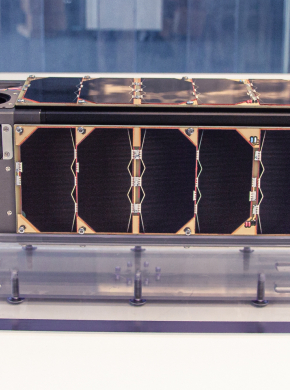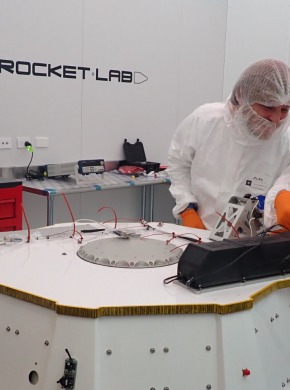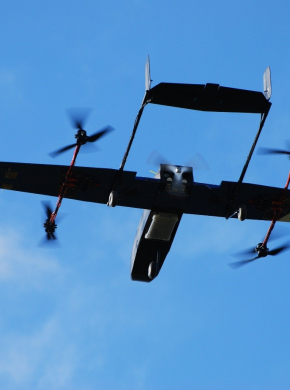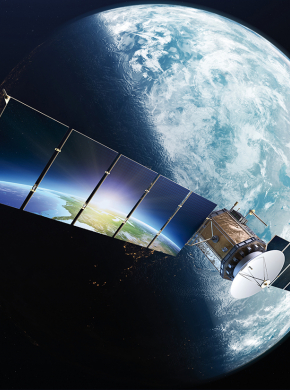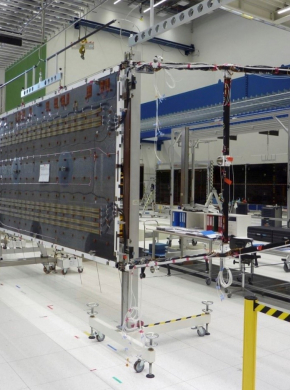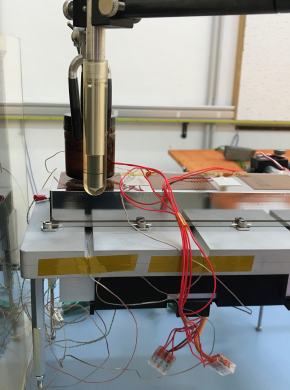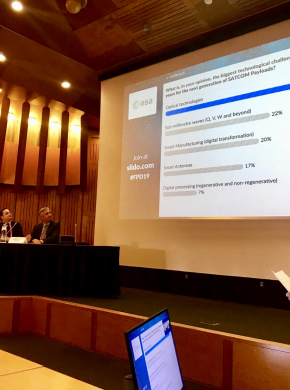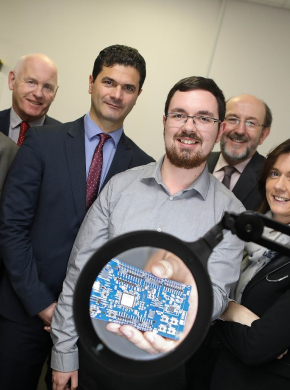ARTES Advanced Technology is dedicated to long term technological development of the satcom industry based on ESA's initiative. This element focuses on research and development of new technologies and techniques in telecom satellites, ground and user equipment for future or evolving satcom systems.
Download the ARTES AT Workplans for Current and Previous Years
Download the ARTES 4.0 Planned Activities Summary Table
Related links
NEWS AND EVENTS
First W-band transmission from space
On 30 June 2021, the first-ever satellite with a W-band radio transmitter on board was launched. The objective of the mission, funded under the ARTES Advanced Technology programme, is to improve our understanding of the atmospheric effects in the…
ARTES Advanced Technology: Inflatables to drag down small satellites
New activity - Inflatable structures for telecom satellites.
The need for ever-more powerful telecom satellites drives the development of the associated technologies. A key example is the need for lightweight, large systems such as solar…
AlbaPod: the most advanced space-proven PocketQube deployer
The ‘maker’ movement in electronics and the meteoric rise of smartphones have led to a surge in small satellites - such as nano- and picosatellites (picosats are the tiniest of smallsats). But something has to propel these pocket-size payloads…
Novel flat panel antennas give drones long-range satcom capabilities
A satellite communications antenna which fits snugly into the wing of a UAV or ‘Remotely Piloted Aircraft’ (RPA) for use in long-range missions has now ‘got its wings’ – giving the green light for a variety of civilian applications across the…
'Extraordinary efficiencies’ with next-generation space solar cell
Telecommunication satellites are demanding ever-increasing power for new technologies. This makes ever-more efficient and lightweight solar generators a must for full electric propulsion satellite platforms.
AZUR SPACE, German-based…
A giant step towards satellite interference mitigation with SkyMON
Data-hungry media, like HDTV and mobile services, have made the use of satellites and their broadcasting capabilities crucial for global communications. But in order to offer these services there is a growing number of satellites required,…
Qualification of new family of hybrid solar arrays
Under ESA’s Competitiveness & Growth programme, Airbus (Ottobrunn, D) is qualifying a new family of hybrid solar arrays that is capable to deliver approximately ≈ 50% more power in the same volume and with the same weight as previous…
Game changing device for spacecraft thermal control on the horizon
The new Airbus Defence and Space (Airbus DS) Eurostar Neo satellite product line offers one of the largest communications payload capacity on the world market. The amount of thermal dissipation created by such large communication payloads…
Additive Manufacturing – making the impossible possible with 3D printing
Additive Manufacturing (AM) can be considered one of the most disruptive emerging technologies, its radical approach being one of the driving forces of the ‘fourth industrial revolution’. An Innovative aerospace supplier, SWISSto12, has developed…
Improved broadband connectivity from MEO satellites is on the horizon
The trend towards MEO (Medium Earth Orbit) satellites is gaining momentum with further growth in the segment very likely. This shift has created a need for enhanced modems to better match the characteristics of this orbit.
ESA Final Presentation Days – a flying start to 2019
With over 250 participants from 18 countries coming together at ESTEC in Netherlands, the annual event for Industry and ESA experts in Satellite Communications featured a 15% increase in attendance, making it the most successful edition to date…
Launch-pad for Irish space-tech projects
The partnership between Dublin City University and European Space Agency (ESA) is succeeding in providing the launch-pad for Irish companies to increase their engagement with emerging space-related technologies.



